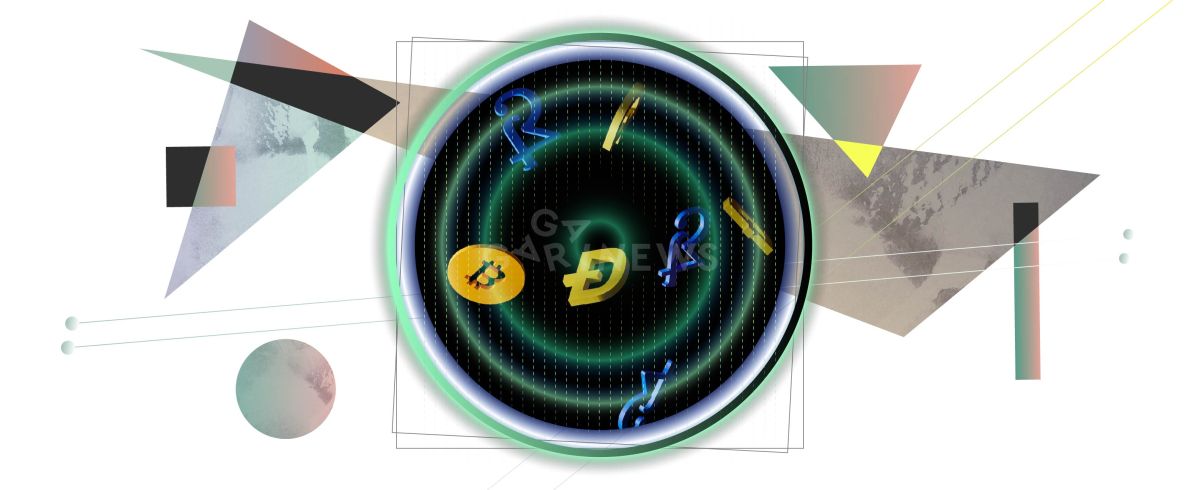Cryptocurrency market capitalization: what should an investor know?

Crypto market capitalization is the total value of all digital assets currently available on the exchange.
Calculation of market capitalization
The capitalization of any cryptocurrency is calculated by multiplying its issue (the number of coins issued) and the current market value of the token. Therefore, the total market capitalization of the cryptocurrency market is the sum of the capitalization of all cryptocurrencies combined.
For example, bitcoin’s capitalization today is $429 billion. This estimate is obtained by multiplying 19,000,000 by 22,400 (where 19 million is the number of BTC tokens circulating in the market, and $22,400 is the current market price of bitcoin).
The capitalization of bitcoin, as well as the entire market, can change up or down because both issuance and price are changeable. Today, the crypto market is “worth” more than one trillion dollars, with peak capitalization reaching nearly $3 trillion in 2021.
When prices are stable, the capitalization of the project can be increased by issuing additional tokens (although this carries inflation risks and can work in the opposite direction). When prices rise, capitalization grows through the market. In a “falling market”, the value of coins is constantly decreasing, reducing the capitalization of the projects behind them.
How to use market capitalization data
When choosing a coin to invest in (i.e., with the expectation of profiting from its increasing value rather than using its utilitarian features), one of the important metrics may be its capitalization. Some tokens may be undervalued compared to the coins of competing projects in the same segment (e.g., DeFi, Play-to-Earn, or metaverses), from which one can conclude that they have growth potential.
Another example of using capitalization data is calculating investment goals. For instance, if you found another “Ethereum killer”, then, based on Ethereum capitalization, you can try to imagine the percentage of potential profit from your favorite. After all, if it is a “killer”, it should catch up with ETH in terms of capitalization at the very least.
You can also find curious market hypotheses about the possible flow of funds into “crypto” from much more capitalized stock or gold markets, which are used to estimate the prospects and growth order of the cryptocurrency market itself.
It is worth noting that investment conclusions based solely on the crypto market’s capitalization can be wrong. The reasons may be the following:
Errors in calculations: it is not always possible to accurately determine the real issue of the coin. And some projects have an unlimited supply. If this is the case with your chosen asset, then it makes no sense to consider its capitalization in your further calculations. It is also very easy to fall into the “mind trap”: a project coin with a low capitalization may seem promising while, in fact, it may not have value or use.
Manipulation: to arouse investor interest in an unreliable crypto-asset, organizers, may artificially increase demand for the coin, which positively affects capitalization. Such manipulation makes the data unreliable and unobjective, which may cause the investor to lean toward an investment decision in favor of the malefactors.
Conclusion
Cryptocurrency market capitalization remains a sought-after and useful indicator that can tell a lot about the current situation in the sector.
However, always remember the DYOR (Do Your Own Research) rule. Do a complete study of projects before selecting their tokens for your “portfolio” shortlist. Capitalization is an important parameter but still not the only one.
The content on The Coinomist is for informational purposes only and should not be interpreted as financial advice. While we strive to provide accurate and up-to-date information, we do not guarantee the accuracy, completeness, or reliability of any content. Neither we accept liability for any errors or omissions in the information provided or for any financial losses incurred as a result of relying on this information. Actions based on this content are at your own risk. Always do your own research and consult a professional. See our Terms, Privacy Policy, and Disclaimers for more details.

























